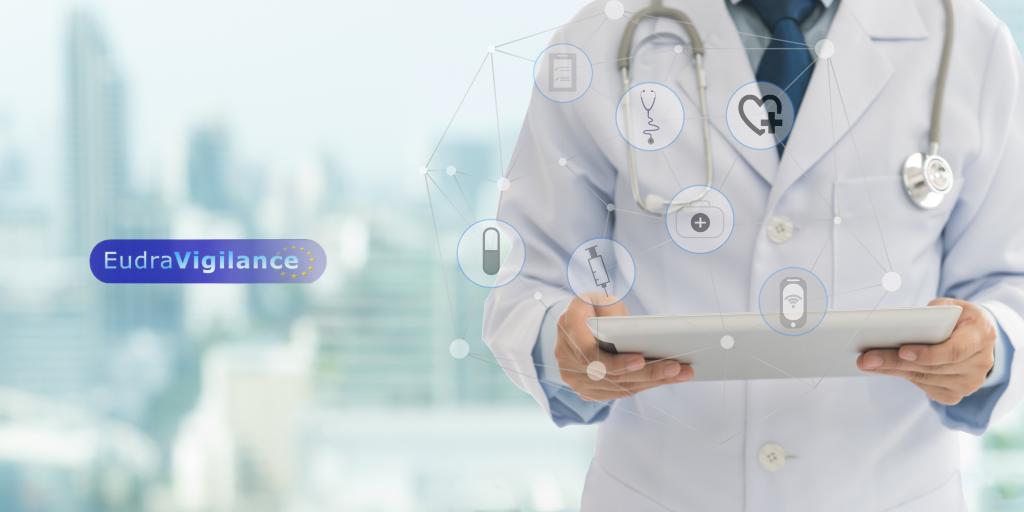EudraVigilance: basic information
EudraVigilance (European Union Drug Regulating Authorities Pharmacovigilance) is a system designed for reporting suspected adverse reactions to medicines, otherwise known as adverse drug reactions (ADRs). It has been in operation since December 2001. The European Medicines Agency (EMA) is responsible for developing, maintaining and coordinating the database. EudraVigilance supports the safe and effective use of medicines by way of:
- the electronic exchange of individual case safety reports (ICSRs) between the EMA, the competent national authorities, marketing authorisation holders (MAHs) and the sponsors of clinical trials in the European Economic Area (EEA);
- the early detection and evaluation of possible safety signals;
- the publication of better information about medicines authorised in the EEA 1.
EudraVigilance: data collection
EudraVigilance is grounded in a fully automated safety and message-processing system, which uses an XML format, and in an extensive pharmacovigilance database with query and tracking functions.
The data in the EudraVigilance database are held in two modules. One is the EudraVigilance Clinical Trial Module (EVDTM), which covers suspected, unexpected, serious, adverse reactions (SUSARs). The information is reported by the sponsors of interventional clinical trials. The other is the EudraVigilance Post-Authorisation Module (EVPM), which is focused on serious and non-serious ADRs to authorised medicines. The information may come from the following sources:
- spontaneous reports from healthcare professionals or patients;
- non-interventional, post-authorisation trials;
- scientific, medical publications. This includes both spontaneous reports and non-interventional trials 2.

EudraVigilance: data use
In addition to the European Union (EU) regulatory network, EudraVigilance can be used by healthcare professionals and patients alike. This means that they are able to obtain information on data submitted to EudraVigilance via the European database of suspected ADR reports.
Most publications are conference abstracts, at 47%, and scientific articles, at 44%. The countries leading the provision of information are the United Kingdom, Italy, the Netherlands, France, Denmark and the United States 3.
In 2021, there was an increase in the number of reports concerning safety in connection with COVID-19 vaccines, which occurred alongside a minor decrease in submissions about ADRs for other medicines. This is not in the least surprising. It springs from the fact that more than seven hundred doses of vaccines were administered in the European Union over that year 4.
In addition, it is worth noting that 3,525,975 ICSRs on ADRs for all medicines were collected over the same period, constituting an increase of 93% on 2020. This was also the result of COVID-19 vaccines, which were the focus of 48% of the reports 5.
Classification of scientific publications based on EudraVigilance data
The publications available in the EudraVigilance system have been divided into the following groups:
- safety issues, describing a signal and characterising the risk or the general safety profile of the drug in question;
- pharmacovigilance topics, where the data were used to analyse pharmacovigilance activities, research methodologies, such as signal detection methodologies, and ADR reporting, including consumer reports and medication errors;
- clinical perspectives, where EudraVigilance data were used to support clinical practice and discussions on treatment guidance 6.

Article 57 and the EMA’s use of information
Every MAH for medicines in the EU and the EEA is obliged both to submit information on the medicines to the EMA and to keep the information up to date. The intention is to create a full inventory of all the medicines authorised for use with the EU and EEA, including those authorised centrally by the EMA and those authorised at the national level.
The EMA uses this information for the following purposes:
- to carry out data analyses, including:
- analysis of data in the EudraVigilance system and signal management;
- reporting and coding ICSRs;
- data analytics;
- business intelligence;
- to facilitate the regulation of medicines and fulfil regulatory actions and legal obligations, such as:
- the coordination of regulatory actions for the purpose of protecting public health, including referral procedures, establishing a repository of periodic safety update reports and monitoring the literature;
- supporting the calculation of pharmacovigilance fees;
- to reinforce communication between stakeholders by:
- setting up the European medicines web portal;
- publishing a full list of all the medicines authorised in the EEA, together with contact details for pharmacovigilance-related queries;
- granting proactive and reactive access to EudraVigilance data;
- exchanging data within the EU and internationally;
- facilitating communication between the Pharmacovigilance Risk Assessment Committee and MAHs 7.

Changes in reports submitted to EudraVigilance
It is important to remember that changes to reporting came into force on 30 June 2022. As of that date, side effects must be reported to EudraVigilance using a data format based on the international standards set out by the International Organization for Standardization (ISO). The standards cover:
- ICSRs (ISO 27953-2:2011);
- terminology relating to forms of dose and administration routes for medicines, in accordance with the EMA’s Referentials Management Service (ISO/FDIS 11239:2012) 8,9.
The changes are intended to increase both the quality of the data and the analytical capabilities in EudraVigilance.
EudraVigilance is an excellent demonstration of how the pharmaceutical industry is changing. At one time, information concerning medicines came primarily from healthcare professionals or the manufacturers. The current picture is different, though. Nowadays, patients are a significant source of knowledge, generating a growing number of reports; in the case of COVID-19, they constituted more than half of the information submitted over the two years of the pandemic 10.
In conclusion, it can be said, with a good deal of certainty, that the trend is intensifying year by year, creating a much wider capability for acquiring valuable information.

If you need support in the pharmacoviligance or regulatory affairs issues, please contact us. Our experienced and highly-qualified team may help you to find the most convenient solution.
1 Source: https://www.ema.europa.eu/en/human-regulatory/research-development/pharmacovigilance/eudravigilance.
2 Source: https://www.adrreports.eu/en/index.html
3 Sources:https://link.springer.com/article/10.1007/s40264-018-0647-1,https://www.ema.europa.eu/en/documents/report/2021-annual-report-eudravigilance-european-parliament-council-commission_en.pdf.
5 Ibidem.
6 Source: https://link.springer.com/article/10.1007/s40264-018-0647-1.
8 FDIS: Final Draft International Standard; https://www.iest.org/Standards-RPs/ISO-Standards/ISO-Document-Stages.
9 Source: https://www.ema.europa.eu/en/human-regulatory/research-development/pharmacovigilance/eudravigilance.


